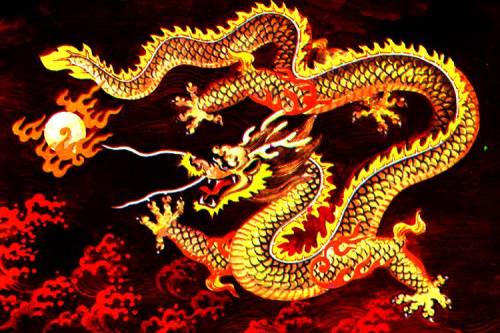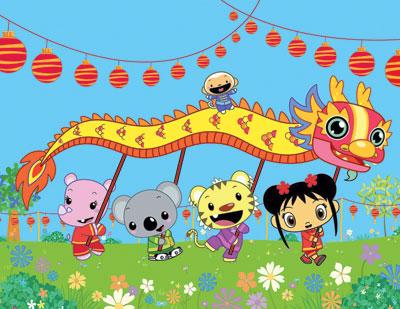 he Culture of China (simplified Chinese: 中国文化; traditional Chinese: 中國文化; pinyin: Zhōngguó wénhuà) is one of the world’s oldest and most complex cultures.[1][2] The area in which the culture is dominant covers a large geographical region in eastern Asia with customs and traditions varying greatly between towns, cities and provinces.
he Culture of China (simplified Chinese: 中国文化; traditional Chinese: 中國文化; pinyin: Zhōngguó wénhuà) is one of the world’s oldest and most complex cultures.[1][2] The area in which the culture is dominant covers a large geographical region in eastern Asia with customs and traditions varying greatly between towns, cities and provinces.
 Identity
Identity
Today there are 56 distinct recognized ethnic groups in China.[3] In terms of numbers, however, the pre-eminent ethnic group is the Han Chinese. Throughout history, many groups have been assimilated into neighboring ethnicities or disappeared without a trace. At the same time, many within the Han identity have maintained distinct linguistic and regional cultural traditions. The term Zhonghua Minzu has been used to describe the notion of Chinese nationalism in general. Much of the traditional cultural identity within the community has to do with distinguishing the family name.
Regional
Traditional Chinese Culture covers large geographical territories, where each region is usually divided into distinct sub-cultures. Each region is often represented by three ancestral items. For example Guangdong is represented by chenpi, aged ginger and hay.[4][5] Others include ancient cities like Lin’an (Hangzhou), which include tea leaf, bamboo shoot trunk and hickory nut.[6] Such distinctions give rise to the old Chinese proverb: “十里不同風,百里不同俗/十里不同风,百里不同俗” (Shí lǐ bùtóng fēng, bǎi lǐ bùtóng sú), literally “the wind varies within ten li, customs vary within a hundred li.”
Language
The first 4,000 years of Spoken Chinese encompassed both Old Chinese and Middle Chinese, after which it began to split into various dialects and languages about 1,000 years ago. In the Ming Dynasty standard Mandarin was nationalized. Even so, it wasn’t until the Republic of China era in the 1900s when there was any noticeable result in promoting a common unified language in China.
The ancient written standard was Classical Chinese. It was used for thousands of years, but was mostly reserved for scholars and intellectuals. By the 20th century, millions of citizens, especially those outside of the imperial court were illiterate.[7] Only after the May 4th Movement did the push for Vernacular Chinese begin. This allowed common citizens to read since it was modeled after the linguistics and phonology of a spoken language.
Mythology and spirituality
Chinese religion was originally oriented to worshipping the supreme god Shang Di during the Xia and Shang dynasties, with the king and diviners acting as priests and using oracle bones. The Zhou dynasty oriented it to worshipping the broader concept of heaven. A large part of Chinese culture is based on the notion that a spiritual world exists. Countless methods of divination have helped answer questions, even serving as an alternate to medicine. Folklores have helped fill the gap for things that cannot be explained. There is often a blurred line between myth, religion and unexplained phenomenon. While many deities are part of the tradition, some of the most recognized holy figures include Guan Yin, Jade Emperor and Buddha. Many of the stories have since evolved into traditional Chinese holidays. Other concepts have extended to outside of mythology into spiritual symbols such as Door god and the Imperial guardian lions. Along with the belief of the holy, there is also the evil. Practices such as Taoist exorcism fighting mogwai and jiang shi with peachwood swords are just some of the concepts passed down from generations. A few Chinese fortune telling rituals are still in use today after thousands of years of refinement.
Literature
Chinese literature began with record keeping and divination on Oracle Bones. The extensive collection of books that have been preserved since the Zhou Dynasty demonstrate just how advanced the intellectuals were at one time. Indeed, the era of the Zhou Dynasty is often looked to as the touchstone of Chinese cultural development. The Five Cardinal Points are the foundation for almost all major studies. Concepts covered within the Chinese classic texts present a wide range of subjects including poetry, astrology, astronomy, calendar, constellations and many others. Some of the most important early texts include I Ching and Shujing within the Four Books and Five Classics. Many Chinese concepts such as Yin and Yang, Qi, Four Pillars of Destiny in relation to heaven and earth were all theorized in the dynastic periods.
Notable confucianists, taoists and scholars of all classes have made significant contributions to and from documenting history to authoring saintly concepts that seem hundred of years ahead of time. Many novels such as Four Great Classical Novels spawned countless fictional stories. By the end of the Qing Dynasty, Chinese culture would embark on a new era with Vernacular Chinese for the common citizens. Hu Shih and Lu Xun would be pioneers in modern literature.
Leave a comment